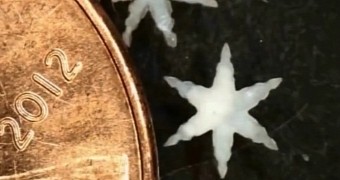Mankind has come a long way from the age when all surgeries consisted of deep and bloody cuts. While they are still mostly reliant on scalpels, not all the instruments need to be visible to the naked eye now.
John Hopkins University scientists are particularly favorable towards techniques which involve microscopic lifeforms and machines. Especially machines.
Although it's not quite accurate to call their new biodegradable microgrippers “machines” since they barely qualify for the term.
Then again, they do have the ability to change shape and perform tasks based on chemical, kinetic and magnetic energy. Magnetic because of how they are supposed to make their way through a patient's body.
The microscopic biodegradable microgrippers
One of the main issues with microscopic microgrippers is that their success when it comes to reaching infected or cancerous tissue is iffy at best.
Things get even more complicated when the 300-micrometer microgrippers are supposed to be used to retrieve certain tissue samples. Retrieving them is no small matter, and the chances of some being left behind in the body is high.
The latter problem was solved by making the grippers biodegradable. The microgrippers can now dissolve in the body.
The other problem was solved by mixing the soft hydrogels with polymers containing magnetic nanoparticles.
Those nanoparticles can then be magnetically influenced from outside the body into reaching the areas of interest. Magnets are used to guide them on the path as it were.
The composition of the microgrippers
A thin layer of rigid polymers was designed and then embedded with magnetic nanoparticles that they can substitute for metal.
The stiff polymers were integrated into soft hydrogels and, thus, created little robotic hands that can be magnetically guided with a probe.
The grippers are strong enough to wrap around cells and perform biopsies or deliver drugs to areas that are inaccessible via other methods. The grippers are normally curled up, allowing them to pass through small catheters easily, but when warmed up to the body temperature they unfold and even fold in the opposite direction to grip tissue as needed.
Eventually, the microgrippers will be able to work independently, without human direction, but we're not quite there yet.

 14 DAY TRIAL //
14 DAY TRIAL // 